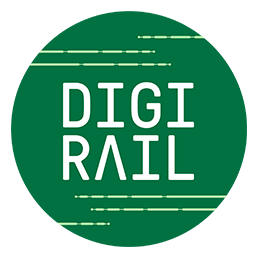The Digirail project participated in the Rata 2025 event held for the railway industry in Tampere Hall, where our specialists presented the key themes and progress of the project. We will be presenting the content of the speeches made by the Digirail people in our series of articles called “Lessons learnt in the Rata 2025 event”.
The focus of risk management during Digirail’s development and verification phase is to address the risks related to the safety and performance of the railway system in accordance with the requirements of the Commission Implementing Regulation on risk management. At the Rata event, we were provided with a comprehensive insight into the risk management of the Digirail project under the guidance of our specialists Miikka Uotila and Arja Kivinen.
In the case of Digirail, risk management is exceptionally extensive and covers, among other things, technological changes and new operating models. Risk management must also consider reviews of different processes in the project as interfaces, such as reviews on operational safety and cyber security. Digirail’s risk management has been organised in subsets and also the risks of the Commission Implementing Regulation (risks affecting the safety of the railway system) are dealt with by subset, such as the guideline set, the radio network solution and qualifications and training. This will allow the changes brought about by Digirail to be identified and their significance assessed in a systematic and justified way.
Risk data management supports the project’s success
Risk data management in the Digirail project is a key factor in the success of a national and long-term project. As the project progresses, it is important to ensure that all relevant risk data is communicated to stakeholders and that the lessons learnt are also transferred to future project phases. To support this, Digirail has developed a risk management model, which is continuously developed according to project needs.
Risk management will also be carried out in close cooperation with the EKA implementation project to ensure that lessons learnt are effectively applied in future implementation phases. This will ensure that the safety of the railway system remains at a high level throughout the project.
“In a large and long-term project involving several parties, the experience and expertise in risk management and related documentation, as well as common risk management procedures and tools, play an important role in risk management processes and associated information management,” Miikka Uotila and Arja Kivinen state in their presentation.
